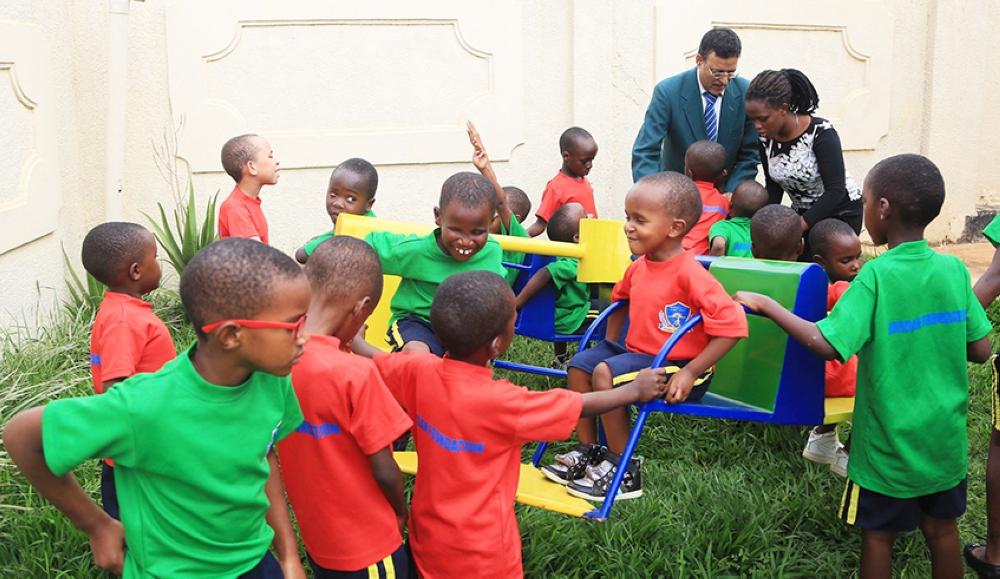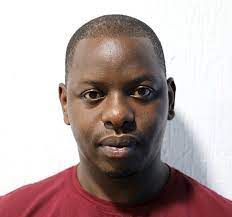

Aline Uwimbabazi, a child from Gatsibo District, dropped out of school due to leg impairment as she had no facilitation to be able to attend classes.
Uwimbabazi, eventually, got a wheelchair and she is about to start Primary three at Nyamirambo Primary school.
ALSO READ: Making school inclusive for children living with disabilities
"My mother is not financially capable to afford all I need. My father left us and married another woman. I had dropped out of school but I finally got a wheelchair from Make Way Programme to be able to go back to school. I always emerge first or second in class. Last academic year I got 83 marks out of 100,” she said.
ALSO READ: Govt urged to enforce implementation of special needs education policy
Make Way Programme, implemented by National Union of Disability Organisations in Rwanda (NUDOR), conducts evidence-based advocacy, using the lived experiences shared in safe spaces for youth with compounded vulnerabilities: Youth with disabilities.
"I was the only child in the village who could not go to school due to my leg impairments. I was always in isolation. Now I am no longer depressed because I study together with other children. The only challenge I face is the road which is not paved since I use a wheelchair,” added.
Uwimbabazi is among thousands of learners with disabilities in Rwanda.


In 2022/23, out of a total of 4,456,419 learners, 40,342 (0.9%) were identified as having disabilities.
In pre-primary education, the number of learners with disabilities represents only 0.5% of the total pre-primary learners (540,998).
ALSO READ: New policy to promote inclusion for students with disabilities in TVET schools
In primary education, the number of students with disabilities increased from 29,994 to 31,159 comprising 1.1% of the total primary school students (2,838,343).
In secondary education, the number of students with disabilities increased from 4,849 to 4,983 in 2022/23 comprising 0.6% of the total secondary school students (729,998).
Data shows that learners with physical and motor challenges constitute the majority, representing 31.5% of the total students with disabilities.
They are followed by learners with specific learning difficulties which represents 19.4%.
Learners with visual impairment come third, representing 13.4%. Learners with speech and language difficulties are also many, representing 12.6%.
For TVET L1-L5, there was an increase from 611 to 620 in 2021/22 students with disabilities (0.3% of total TVET students).
Higher education saw a decrease from 234 to 224 students with disabilities (0.2% of total higher education students).
In primary level, the majority are learners with physical disabilities followed by learners with specific learning difficulties.
Beth Nasiforo Mukarwego, the chairperson of The National Union of Disabilities’ Organisations of Rwanda (NUDOR), said while the world celebrated International Youth Day this year, youth should be engaged to facilitate advocacy for youth and children with disabilities.
"Advocacy is needed to ensure rights of youth and children with disabilities,” she said.
She said schools still need to have facilities that facilitate children with disabilities adding that teachers should also be trained on inclusive education.
According to Albert Mutesa, the Secretary General at Rwanda National Commission for UNESCO (CNRU), there is a need for technology solutions and digital pedagogical practices in the education and socialisation of persons with disabilities in Rwanda.
Need for adapted infrastructure
Pascal Gatabazi, the Chief Technical Advisor at the Ministry of Education, said schools still need to increase facilities that facilitate children with disabilities.
ALSO READ: How schools can apply inclusive education
Though there is an increase in the number of schools with adapted infrastructure for students with disabilities, only 69% of the schools have such facilities.
Accessibility of physical infrastructure is the main factor that affects access and participation for students with disabilities.
"Measures to ensure schools are accessible for students with disabilities need to be put in place.
The data indicates that 56.1% of public schools have accessible toilets for learners with disabilities, 51.4% of government-subsidized schools have accessible toilets for learners with disabilities, while 23.3% of private schools have accessible toilets for learners with disabilities.
On average, 45.6% of schools have accessible toilets for students with disabilities.
The lack of accessible toilets significantly affects enrolment and learning for students with disabilities.
Global education meeting
Rwanda’s achievements in terms of inclusive education will be showcased during the 2024 Global Education Meeting according to Pascal Gatabazi, the Chief Technical Advisor at the Ministry of Education.
The 2024 Global Education Meeting will run from October 31 and November 1, 2024 in the Centro de Eventos do Ceará in the city of Fortaleza and will be a critical milestone to advance education as a Goal in its own right but also recognizing education’s catalytic role in tackling today’s multiple crises and fostering peace, inclusion and sustainable development.
In line with the Education 2030 Framework for Action, UNESCO convenes periodic Global Education Meetings (GEMs) to review the SDG4-Education 2030 agenda against progress made.
At the 2024 GEM, UNESCO will launch the 2024/5 Global Education Monitoring Report to report on the progress made on the SDG4 targets and provide a thematic review dedicated to leadership and education—a critical factor in achieving inclusive and equitable, quality education.


